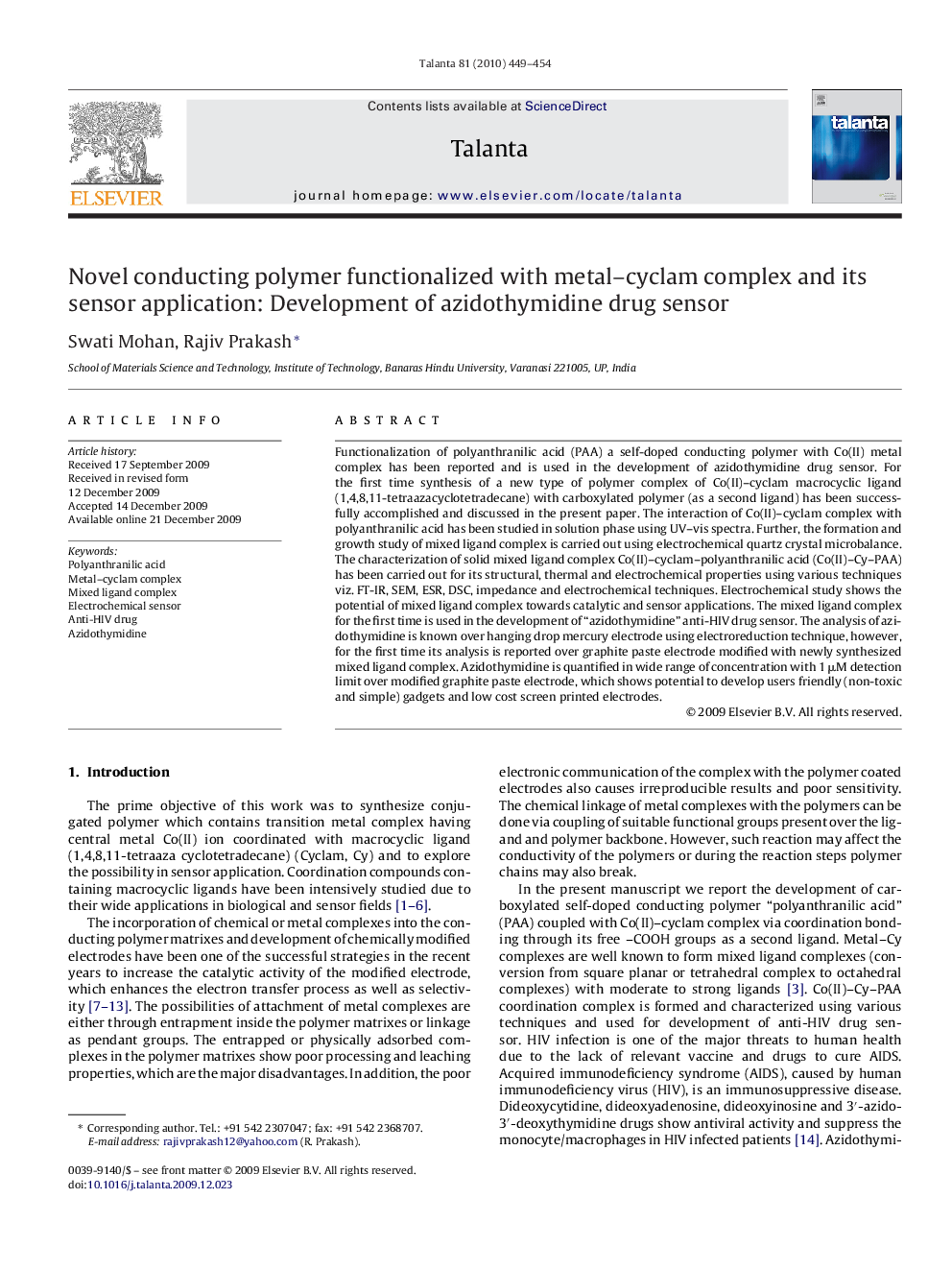| Article ID | Journal | Published Year | Pages | File Type |
|---|---|---|---|---|
| 1246670 | Talanta | 2010 | 6 Pages |
Functionalization of polyanthranilic acid (PAA) a self-doped conducting polymer with Co(II) metal complex has been reported and is used in the development of azidothymidine drug sensor. For the first time synthesis of a new type of polymer complex of Co(II)–cyclam macrocyclic ligand (1,4,8,11-tetraazacyclotetradecane) with carboxylated polymer (as a second ligand) has been successfully accomplished and discussed in the present paper. The interaction of Co(II)–cyclam complex with polyanthranilic acid has been studied in solution phase using UV–vis spectra. Further, the formation and growth study of mixed ligand complex is carried out using electrochemical quartz crystal microbalance. The characterization of solid mixed ligand complex Co(II)–cyclam–polyanthranilic acid (Co(II)–Cy–PAA) has been carried out for its structural, thermal and electrochemical properties using various techniques viz. FT-IR, SEM, ESR, DSC, impedance and electrochemical techniques. Electrochemical study shows the potential of mixed ligand complex towards catalytic and sensor applications. The mixed ligand complex for the first time is used in the development of “azidothymidine” anti-HIV drug sensor. The analysis of azidothymidine is known over hanging drop mercury electrode using electroreduction technique, however, for the first time its analysis is reported over graphite paste electrode modified with newly synthesized mixed ligand complex. Azidothymidine is quantified in wide range of concentration with 1 μM detection limit over modified graphite paste electrode, which shows potential to develop users friendly (non-toxic and simple) gadgets and low cost screen printed electrodes.
